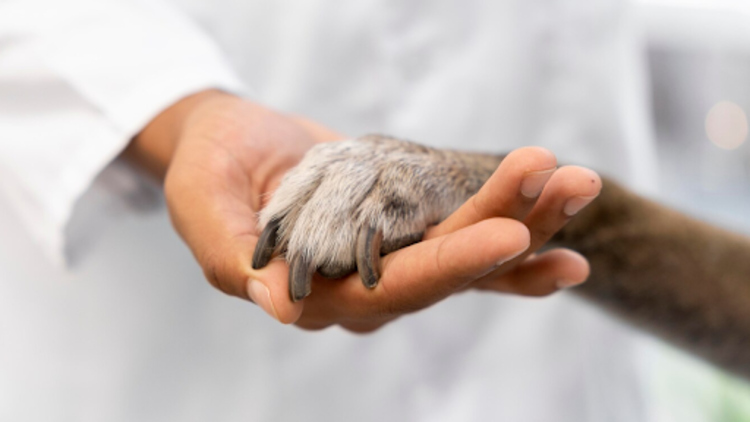
Hyperbaric Oxygen Therapy (HBOT) has gained recognition as a valuable treatment modality in human medicine for various conditions, but its application in veterinary medicine is also steadily growing.
Veterinary HBOT involves the administration of 100% oxygen at increased atmospheric pressure, which facilitates the delivery of oxygen to tissues and promotes healing.
In this comprehensive guide, we’ll explore everything you need to know about veterinary HBOT, including its uses, benefits, and considerations.
Understanding Veterinary HBOT
HBOT involves placing an animal in a pressurized chamber, where the atmospheric pressure is increased to higher levels than normal.
This allows the lungs to absorb more oxygen, which is then transported throughout the body via the bloodstream.
The increased oxygen levels promote tissue oxygenation, reduce inflammation, enhance immune function, and stimulate the release of growth factors, ultimately accelerating the healing process.
Uses of Veterinary HBOT
Veterinary HBOT can be used to treat a wide range of conditions in companion animals, exotic pets, and livestock. Some common uses include:
- Wound Healing
HBOT promotes the healing of wounds, including surgical incisions, traumatic injuries, and chronic ulcers. The increased oxygenation accelerates tissue repair and regeneration, reducing the risk of infection and complications.
- Orthopedic Conditions
HBOT can benefit animals with orthopedic conditions such as fractures, ligament injuries, and osteoarthritis. By improving blood flow and reducing inflammation, HBOT can relieve pain, enhance mobility, and support the healing of musculoskeletal tissues.
- Neurological Disorders
This therapy option has shown promise in the treatment of neurological disorders, including spinal cord injuries, brain trauma, and degenerative conditions like intervertebral disc disease. The increased oxygen delivery to damaged nerve tissues can promote regeneration and functional recovery.
- Respiratory Conditions
HBOT can be beneficial for animals with respiratory conditions such as pneumonia, smoke inhalation injuries, and acute respiratory distress syndrome (ARDS). The increased oxygen levels help improve lung function, reduce inflammation, and support tissue repair.
- Carbon Monoxide Poisoning
HBOT is an effective treatment for carbon monoxide poisoning in animals, as it helps eliminate carbon monoxide from the bloodstream and tissues more rapidly, preventing further cellular damage and neurological complications.
Benefits of Veterinary HBOT
The benefits of veterinary HBOT include:
– Accelerated wound healing
– Reduced inflammation and pain
– Improved tissue oxygenation
– Enhanced immune function
– Promotion of tissue regeneration
– Support for neurological recovery
– Decreased risk of infection
– Non-invasive and well-tolerated treatment option
Considerations for Veterinary HBOT
While veterinary HBOT offers numerous benefits, there are some considerations to keep in mind:
- Patient Selection: Not all animals are suitable candidates for HBOT. Patients with certain medical conditions such as respiratory distress, uncontrolled seizures, or untreated pneumothorax may not be suitable candidates for HBOT.
- Treatment Protocol: The number and frequency of HBOT sessions may vary depending on the patient’s condition and response to treatment. A veterinarian experienced in HBOT should determine the appropriate treatment protocol for each case.
- Safety Precautions: Safety precautions should be followed to ensure the well-being of the patient and veterinary staff during HBOT sessions. This includes proper chamber maintenance, monitoring of vital signs, and adherence to established protocols for gas handling and chamber operation.
- Cost Considerations: This therapy can be a costly treatment option, and pet owners should consider the financial implications before pursuing therapy. Some insurance plans may cover HBOT for certain conditions, so it’s worth exploring coverage options with your veterinarian.
Conclusion
Veterinary HBOT is a valuable therapeutic option for a variety of medical conditions in animals, offering benefits such as accelerated wound healing, reduced inflammation, and support for neurological recovery.
By understanding the uses, benefits, and considerations associated with HBOT, pet owners and veterinarians can make informed decisions about incorporating this advanced treatment modality into their practice.
As research in veterinary sciences continues to evolve, the role of this therapy in improving the health and well-being of animals is likely to expand, providing new opportunities for enhanced patient care and treatment outcomes.
For further insights on this topic, explore more blogs at uniquediyhomedecorideas.com.
